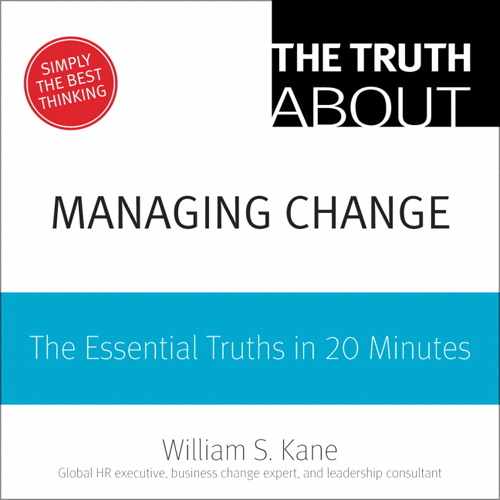TRUTH 17 Decision making: The fastest don’t always finish first
We’ve all worked with managers who, rather than make a difficult decision, will procrastinate until the last possible minute—preferring the status quo or trying to sidestep potential conflict. By consequence, this absence of action often makes matters worse.
On the other hand, America’s self-proclaimed CEO of the nineties, “Chainsaw” Al Dunlap, took Sunbeam Corporation to its knees with his failure to anticipate or manage the unraveling of his organization. He hastily made all the decisions—many before he walked in the door—and he reportedly listened to no one in the process.
In times of organizational change, you will be making dozens of decisions—gathering the facts, defining the problem, identifying available options, obtaining opinions, evaluating possible courses of action, and communicating and implementing a solution. Some decisions will be of little consequence; others will have a visible and pragmatic ripple effect for individuals as well as all organizational participants. You will wear many hats—from judge to referee—and the decision-making style you employ will be in a spotlight.
It may surprise you to know that the style that has served you so well in the past may not be an asset at this point in time. Recent research shows you must adjust your decision-making style as you climb your way up the corporate ladder—or risk missing a rung. Specifically, direct, command-oriented decision making is appropriate for the frontline supervisor on the shop floor. But through and for career progression, you must be open, seek input and opinion, welcome participation, and embrace a more flexible and collaborative style.
Here are some best practices to consider for decision making at any level within the organization.
Work the room ahead of time
Denis R. Brown, a retired executive from ITT and former CEO of Concurrent Computer Corporation, was a master at building consensus around decisions, and his inclusion methodology was straightforward and simple.
On an ongoing basis, he contacted all board members to gather information and perspective about the critical issues for deliberation, as well as to give business updates. This served two primary purposes: It fortified his individual relationships with his key constituents, and the resulting insight helped him prepare for and manage these diverse opinions during discussion.
Not everyone left the boardroom agreeing with every decision; however, everyone understood why the decision was made and could support it.
Don’t be afraid to make decisions
Jack Welch, the former CEO of General Electric, was hardly shy about making decisions. In his quest to make GE the “most valuable” company from an investor’s perspective in the 1980s, he reorganized the company into a decentralized model focusing on service industries and eliminating unprofitable areas. His ultimate goal was to pare the organization, resulting in nearly 200,000 employees leaving GE—saving over $6 billion. Having then torn the company apart, he set out to rebuild GE into a “boundary-less” corporation with common values, an emphasis on quality through the introduction of “Six Sigma,” proactive performance management, and enhanced communications and collaboration.
He was successful—very successful.
Act with appropriate haste
Time can be either an ally (such as when dealing with an emotionally charged issue) or an enemy (such as when your bottom line is bleeding).
Make your decisions with appropriate deliberation about what must be done, why, where, when, who, and how. Make every attempt to be fair and objective, thus minimizing political influence.
Once the decision is made, be sensitive to any humanistic aspects, and move forward with delivery and execution as soon as possible.
Know that your credibility is on the line every day
Try to avoid “maybe” answers, or follow up when time has presumably given more clarity to the situation.
Unless new information becomes available, stick to your word
Remember that trust is a byproduct of congruence between your words and actions. Execute your decisions and only revisit them if new information surfaces that might cause you to take another direction.
